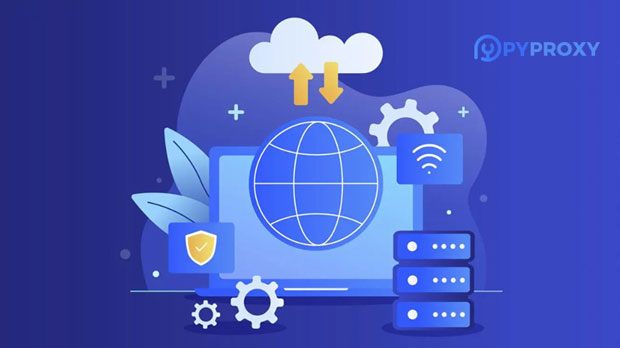In today’s digital world, the internet is filled with restrictions based on geographical location. These restrictions, whether imposed by governments, websites, or content providers, often limit access to information, services, or entertainment. However, a reliable solution to bypass these regional limitations is the use of proxy services, particularly proxy premium services. Proxy premium services provide users with the ability to hide their real IP address and use servers from different regions, enabling access to content otherwise blocked in their location. In this article, we will explore how proxy premium services work, the types of regional restrictions they can help bypass, and the advantages they offer to users. What is Proxy Premium?Proxy premium refers to a high-quality, secure service that acts as an intermediary between a user’s device and the internet. When you use a proxy server, your internet traffic is routed through the proxy, which then accesses websites on your behalf. By masking your IP address, proxy services make it appear as though you are browsing from a different location, enabling you to bypass regional restrictions.Types of Regional Restrictions That Can Be BypassedThere are several types of regional restrictions that proxy premium services can help bypass. Let’s take a look at some of the most common ones:1. Government CensorshipIn some countries, governments impose strict censorship on the internet, limiting access to certain websites or content. For instance, social media platforms like Facebook, Twitter, or YouTube are blocked in countries like China, Iran, and North Korea. Proxy premium services allow users to bypass such censorship by providing access to servers located in regions where these platforms are not blocked.2. Geo-Blocking of ContentGeo-blocking is a common practice used by streaming services like Netflix, Hulu, and BBC iPlayer to restrict access to content based on the user’s location. For example, certain movies or TV shows available in the United States may not be accessible in other countries. By using a proxy premium service, users can route their traffic through a server in the desired region and access content that would otherwise be unavailable.3. Regional Restrictions on Online ServicesMany online services, such as e-commerce websites or gaming platforms, have regional restrictions that limit who can access them. For example, some e-commerce sites may only allow users from certain countries to make purchases, or video games may be region-locked to specific areas. By using a proxy premium service, users can change their IP address to one from a region where access is not restricted, enabling them to use these services freely.4. VPN Blocked WebsitesSome websites and services actively block VPN users in an attempt to enforce regional restrictions. However, proxy premium services often offer a solution by providing IP addresses that are less likely to be detected by these websites, making it easier to bypass VPN blocks and access the desired content.5. Online Privacy ProtectionIn addition to bypassing regional restrictions, proxy premium services can also offer enhanced privacy protection. Many websites track users’ activities online, and using a proxy can help protect your identity and prevent websites from collecting your personal data. While this may not directly relate to bypassing content restrictions, it is an important aspect of using a proxy service.Benefits of Using Proxy Premium ServicesUsing proxy premium services comes with a range of benefits that go beyond simply bypassing regional restrictions. Below are some of the advantages:1. Faster Access to Blocked ContentProxy premium services are designed to provide fast and reliable connections. This ensures that users can access blocked content with minimal buffering or lag, especially when using streaming services.2. Better Security and PrivacyProxy premium services often offer additional security features, such as encrypted connections, which help protect users’ data and privacy. This is particularly important when accessing websites over public networks, such as Wi-Fi in cafes or airports.3. Cost-Effective SolutionWhile some VPN services may require a higher cost for a good experience, proxy premium services are often more affordable and provide comparable levels of security and access to blocked content. This makes proxies a cost-effective solution for users who want to bypass regional restrictions without breaking the bank.4. Avoid Tracking and AdsUsing a proxy premium service can help avoid being tracked by websites and prevent targeted ads. By masking your real IP address, websites are less able to collect data on your browsing habits.5. Reliable Access to Global ContentFor individuals who rely on global content, such as businesses with international operations or individuals who travel frequently, proxy premium services offer reliable access to region-specific information. Whether it’s accessing news, entertainment, or academic resources, a proxy can ensure continuous access from anywhere in the world.How to Choose the Right Proxy Premium ServiceChoosing the right proxy premium service is essential for ensuring that you can bypass regional restrictions effectively. Here are some factors to consider when selecting a service:1. Server LocationsLook for a proxy service that offers servers in the regions where you need access. For example, if you need to access US-only content, choose a proxy with servers located in the United States.2. Speed and ReliabilityEnsure that the proxy service provides fast speeds and minimal downtime. A slow connection can hinder your experience, especially when streaming or using other high-bandwidth applications.3. Security FeaturesCheck for additional security features, such as encryption, to protect your privacy while using the proxy. This is especially important when accessing sensitive information or browsing over public networks.4. Customer SupportA good proxy service should offer reliable customer support in case you encounter any issues. Look for services that provide 24/7 support through live chat or email.5. PricingWhile proxy premium services are generally more affordable than VPN services, make sure you are getting value for money. Compare prices and features before committing to a service.In conclusion, proxy premium services offer an excellent solution for bypassing regional restrictions on the internet. Whether you are trying to access blocked content, avoid government censorship, or protect your online privacy, a proxy premium service can provide the tools needed for secure, fast, and reliable internet browsing. With various benefits, including better security, cost-effectiveness, and global content access, proxy services are an invaluable tool for navigating the increasingly restrictive digital landscape. As the internet continues to evolve, using a proxy premium service will remain an essential method for staying connected and accessing the content you need, regardless of geographical limitations.
Oct 12, 2025



































































